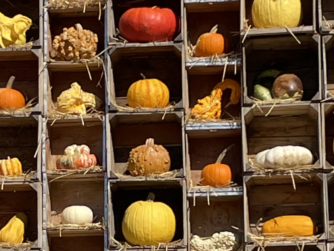I know this is going to be an unpopular opinion in the health, wellness, and fitness world but hear me out……
I am a holistic health coach. I am a yoga and fitness instructor, I buy organic, I don’t buy pop/soda, I follow Dr. Amen and Dr. Hyman on Instagram. We know the dangers of artificial colors and dyes, we know the addiction of sugar. We know processed food and fast food isn’t the best option for us to consume daily. But what happens when we constantly tell our kids no they can’t have what the other kids are having during holiday events and gatherings?
Do parents need to ration the candy? According to one expert, the answer is no.
Let them eat candy.
“The goal is to trust them to trust themselves,” says registered dietitian Emily Fonnesbeck, “It’s very normal for them to eat more than necessary on Halloween night and maybe even the day after.”
Fonnesbeck recommends parents let trick-or-treaters enjoy their Halloween candy that night and tomorrow, and taper off and have less in the coming days. “Parents can use a flexible structure where they have set meal and snack times, and candy can be a part of those if the kids request it,” she says.
This kind of approach is part of what nutritionist and author Ellyn Satter calls the Division of Responsibility in Feeding. Basically, Satter believes part of a parent’s job is to trust a child to be responsible for whether they eat something, and for how much of it they do eat.
According to Fonnesbeck, trying to control a kid’s candy intake on the big night can backfire, and limits their opportunity to learn about making good food choices for themselves, even when they’ve got a pillowcase full of candy.
She suggests parents use neutral language when describing food so as not to give too much power to any one food, food ingredient or food group. Sugar is just sugar, after all. DING, DING, DING!!!! This right here!
“If we make candy a big deal, it will be a big deal,” she says. “If we talk about it like any other food, it’s more likely that kids will be able to self-regulate their food choices to include a wide variety of foods instead of feeling preoccupied, worried or shameful for food choices.”
If we have a regular structure with meal and snack times where a variety of nourishing foods are served, kids learn to self-regulate.
Some experts advocate for limits.
There are plenty, though, who say kids should not get to gorge on Halloween candy. According to the American Heart Association, kids under two shouldn’t have any foods or beverages with added sugars, and this includes Halloween candy.
A recent study published in the organization’s journal suggests children ages 2 to 18 should eat less than six teaspoons of added sugars daily—it only takes a couple candy bars to go over that limit.
Have you heard of the switch witch? You switch their candy with a toy. I think this is only a good idea if you talk with your kids and tell them about this idea and let them decide if they want to do it and what toy they want. The Switch Witch should be something your kids WANT to do, not a sneaky way of getting rid of extra candy.
I think that if they over eat candy the stomach ache they get will have far more lasting effects as to not eat that much candy next time then tricking them and taking it all away.
There is also give your kids the option to donate some of their candy to our men and women in the army, local hospitals, etc.
My theory is to teach them to eat foods that make them feel good about themselves and that nourish their bodies, make them faster, stronger, feel good, and more energized.
***Avoid calling foods “good” or “bad.” Kids should learn that all foods have a place in their diet. Don’t say carbs are bad, this is bad and so forth. Foods with the least nutrition, such as french fries, chips, and candy don’t need to be off limits.
My motto is we eat organic and healthy the majority of the time. If we are running around and it’s a hectic night and they want French fries, I get them French fries. I have become more and more lax as they have gotten older. I feel if we restrict them too much they will binge later down the road because we “didn’t allow” a certain food in our home. This in turn can be a gateway for disordered eating if we try to restrict them too much.
Parents can get that message across by talking with kids about the food they put in their bodies, why it matters, and how they can learn to make the healthiest choices. Not just a rule, but a routine. Make sure healthy foods are the default setting for your family’s meals, and get everyone involved in choosing some nutritious options. Take kids with you to the grocery store. Younger kids can pick out fresh fruits and veggies. Older kids can take on larger roles like choosing recipes and making a shopping list.
Explain that fruits and veggies have nutrients that will help their bodies grow. Teach them that some foods like whole grains and protein that give them energy to run, dance, and play. Then share some foods help our brain and heart and sometimes we eat food that hurt our stomach and make us tired and blah. While these foods are fine we should try to eat food that make us feel good.
Ultimately, it’s up to us parents to decide how much candy a child has access to.







